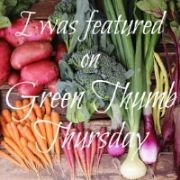 |
| Swiss chard at the school CSA from Monkshood |
Food and school both play a big role in my life so it is not surprising that I spend a good deal of time thinking about both. I have already found a couple of ways to marry the two in a school garden and a healthy lunch program. This year I have been working on a third way to bring better food to our school, a CSA. For anyone not familiar, CSA stands for community supported agriculture and is also known as a “farm share”.
In starting the CSA, my hopes went beyond just connecting people to food, I wanted to connect people to people. I felt that this was a unique opportunity to bring together people who rarely have contact with one another, but have plenty in common. I envisioned students coming in to pick up their family’s vegetables, parents and teachers swapping recipes, and everyone eating healthier by increasing the variety and amount of fresh vegetables they eat.
 |
French breakfast radish at the school CSA from Monkshood |
So far, the experience has been all that I hoped for. I get to hear people gushing about their vegetables and all the wonderful recipes they are trying out. Both teachers and district parents bring their children, who are happy to point out what vegetable each bin contains. Teachers from different buildings are getting to know one another, and I am getting to know everyone!
An additional benefit of the CSA is that it improves the quality of food available to people in need in our area. Any left overs, or shares that people do not pick up are donated to a local food bank. While the food bank is a recipient of a good deal of dry goods, patrons do not otherwise get any fresh produce.
Since it was my first time orchestrating something like this, I looked for help. Just Food, a NYC based organization that works to connect farmers to consumers in the city, proved to be a great resource, even though my school is located outside of NYC. They offer free workshops on how to start a CSA and connected me with the farmer from Monskhood Nursery in upstate NY. I am hoping to work with the farm over the summer to get certification to accept SNAP (the Supplemental Nutrition Assistance Program that used to be called food stamps) so that shares will be an option for people from a greater variety of economic means.
Some people questioned why I did not work with a more local farm since there are several nearby that have CSAs. Although I am certainly a big proponent of supporting local farmers, I was even more interested in creating something uniquely ours. The local farms already have CSAs with pick-up at their farms. I thought it was more important to work with a farm that would deliver the CSA shares weekly to my school so that parents, teachers and staff in my school district would have an opportunity to connect with each other at school. My hope is that as the CSA grows, each of the elementary schools will start their own, and we can start to partner with more local growers.
(This post was shared on Green Thumb Thursday and Healthy, Happy, Green & Natural Party Hop.)



























